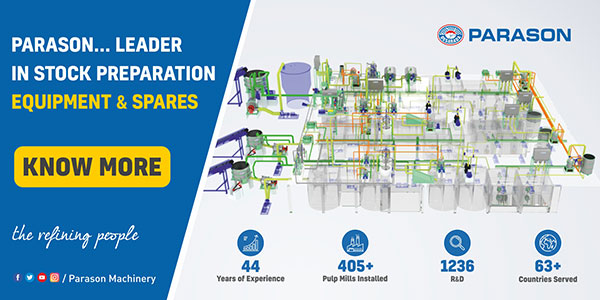Crops like cotton, jute, hemp, etc. are proven to be a strong raw material substances. Apart from this, plants like bamboo, elephant grass, esparto, etc. are the very essential components of raw materials in papermaking.
Tip: To produce fine quality of paper, the raw material must contain strong cellulosic and fibrous properties. Strong material produces the best quality of paper that has great wear & tear resistance.
Manufacturing Process

To make a paper, the raw material has to go through certain stages of the process with the help of various paper making machines. This process starts with making pulp.
a. Pulp making
Now, the pulp is a semi-solid material that you can derive by breaking down the raw material and mixing it with water to obtain fibers from it.
To break the raw material, several machines are used like the rotors, screeners, agitators, cleaners, refiners, etc.
It is necessary to clean the pulp before transferring it into the paper.
You can use several sized vessels/containers for making pulp as per the production quantity in your paper mill.
You can also add bleaching chemicals as per the production requirements for developing the quality of the end product.
Bleaching removes the inks and stains that are present on the pulp to produce a white and fair paper as an end product.
Tip: The cleanest pulp generates the best paper.
Tip: Make sure the pulp doesn’t have any unwanted polluting particles like pins, clips, screws, sticks, etc.
b. Beating
The beating step involves the whipping of pulp to increase fiber bondings in the pulp.
This gives us improved strength properties of the pulp.
You can use other words like squeezing and pounding for this step. Here the pulp obtained from the first step is pressurized to remove water and moisture from it.
You can add other substances like chalk, clay, etc. as fillers to maintain the sturdiness of the pulp.
The duration of the beating process depends on the quantity and quality of your pulp.
Smoother pulp needs less beating than the harder one.
c. Converting pulp to paper
You have certainly heard the name of the Fourdrinier Machine that is very ancient and most used to transform the pulp into paper.
The Fourdrinier machine rolls the pulp and removes all the wetness in the paper and turns the paper into rolled sheets.
The paper is pressed thoroughly and gets the pattern of a perfectly fine paper.
If you think there is still any moistness left in the pulp, you can pass these sheets through the drying cylinders to remove the unwanted waters.
Info: The drying cylinders are attached to the machines to have the moistness removed immediately.
d. Finishing
Once you make sure that the paper is perfectly dried, now the sheets need to be wounded into rolls.
For finishing the paper, you may put chemicals that are used to make the paper shine and glow.
Gloss is added to increase the smoothness of the paper.
The coating is done to make the paper water-resistant and increase its richness qualities, especially for magazines and catalogs.
Tip: Finishing is an essential process as it gives the final look and feels to your paper.
It is advisable to spend a respectable time and amount on the finishing process in papermaking.
That was everything about the paper making as a process.
If you have any questions, feel free to submit it to us in the comment section below.
Thank you for reading.
Keep visiting 🙂


